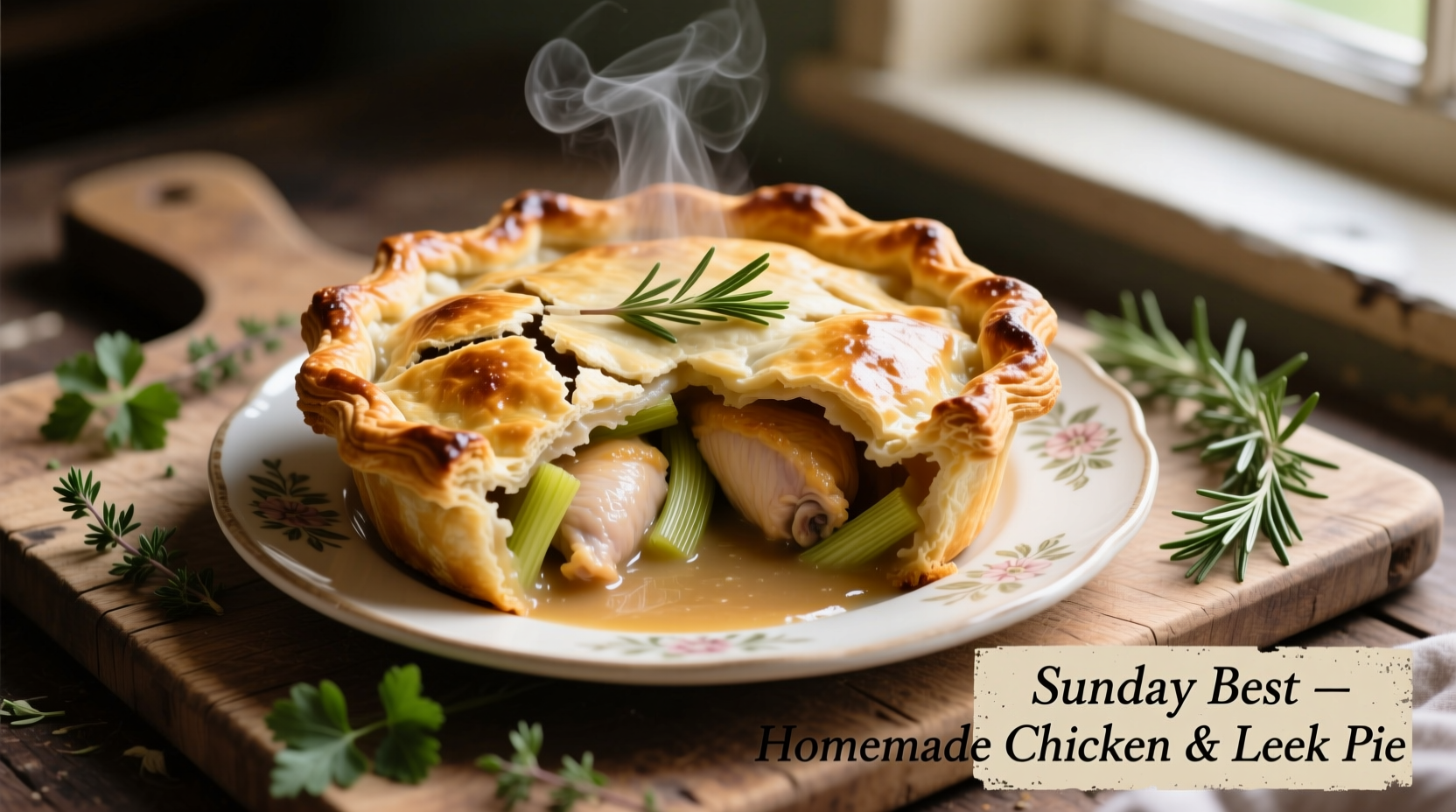Nothing says British comfort food quite like a steaming slice of chicken and leek pie. This classic dish combines succulent chicken with the subtle sweetness of leeks in a rich, creamy sauce, all wrapped in golden, flaky pastry. Whether you're preparing it for a Sunday family dinner or a special occasion, mastering this traditional recipe requires understanding both technique and tradition. In this guide, you'll learn the authentic preparation method, discover why certain ingredients work best, and gain professional insights that transform good pies into exceptional ones.
The Historical Roots of Chicken and Leek Pie
Chicken and leek pie has deep roots in British culinary history, evolving from medieval pie traditions where enclosed fillings preserved meats. Leeks, introduced to Britain by the Romans, became a staple in Celtic and later English cooking. By the 18th century, cookbooks like Hannah Glasse's The Art of Cookery Made Plain and Easy (1747) featured recipes for chicken pies with various vegetables, including leeks.
Unlike many historical pies that used tough meats requiring long cooking, chicken's tenderness made it ideal for shorter baking times, preserving its texture. The pairing with leeks—milder than onions—created a sophisticated flavor profile that appealed to both working-class families and aristocratic tables. During World War II, when meat was rationed, creative cooks adapted the recipe using available ingredients, cementing its place as a versatile national favorite.
Essential Ingredients and Why They Matter
The magic of chicken and leek pie lies in its simplicity, but each ingredient plays a crucial role. Using the right components makes the difference between an ordinary pie and an extraordinary one.
| Pastry Type | Texture | Best For | Preparation Tip |
|---|---|---|---|
| Shortcrust | Firm, crumbly | Bottom crusts, rustic pies | Chill 30 minutes before rolling |
| Puff | Light, flaky layers | Top crusts, elegant presentation | Bake at 400°F for maximum rise |
| Hot Water Crust | Sturdy, sliceable | Hand-raised pies, cold serving | Work while warm for shaping |
For the filling, choose free-range chicken thighs over breasts—their higher fat content prevents dryness during baking. Fresh leeks are essential; their mild, sweet flavor complements chicken without overpowering it. When selecting leeks, look for firm white bases and crisp green tops. The BBC Good Food Guide confirms that leeks contain more iron and vitamin C than onions, contributing both nutrition and flavor complexity.

Step-by-Step Preparation Guide
Follow this professional method for perfect chicken and leek pie every time. The process unfolds in three logical phases: preparation, assembly, and baking.
Phase 1: Preparing Components
- Prepare the chicken: Cut 500g chicken thighs into 1-inch pieces. Season with salt and pepper, then lightly brown in butter over medium heat. Remove and set aside.
- Prepare the leeks: Slice 3 large leeks lengthwise, wash thoroughly to remove grit, then slice crosswise. Sauté in the same pan until softened but not browned (8-10 minutes).
- Create the sauce: Melt 50g butter, whisk in 50g flour to make a roux, then gradually add 300ml chicken stock and 150ml cream. Simmer until thickened, then stir in chicken, leeks, 1 tsp thyme, and 50g frozen peas.
Phase 2: Assembly Process
- Roll out your bottom pastry layer and line a 9-inch pie dish, leaving overhang.
- Pour in the cooled filling—never add hot filling to pastry, as this causes sogginess.
- Roll and place the top pastry layer, crimp edges to seal, and cut steam vents.
- Brush with beaten egg for golden finish.
Phase 3: Baking to Perfection
Bake at 375°F for 35-40 minutes until the pastry is golden and the filling bubbles through vents. Let rest 15 minutes before serving—this allows the sauce to set properly. The UK Food Standards Agency recommends ensuring the internal temperature reaches 165°F for food safety.
Avoiding Common Pitfalls
Even experienced cooks encounter issues with chicken and leek pie. Understanding these limitations prevents disappointment:
- Soggy bottom crust: Always pre-bake (blind bake) the bottom crust for 10 minutes when using shortcrust pastry. Alternatively, brush the unbaked crust with beaten egg white before adding filling.
- Dry chicken: Thigh meat retains moisture better than breasts. Never overcook the chicken before adding to the pie.
- Runny filling: Cool the filling completely before adding to the pastry. The sauce should be thick enough to hold its shape when spooned.
- Shrinking pastry: Handle pastry minimally and avoid stretching when placing in the dish.
Variations and Serving Suggestions
While traditionalists prefer the classic preparation, thoughtful variations can enhance your chicken and leek pie experience:
- Add a splash of white wine to the sauce for depth
- Include mushrooms for earthy complexity
- Use smoked chicken for a distinctive flavor profile
- Top with cheese for a modern twist
Serve your pie with creamy mashed potatoes and seasonal vegetables for the quintessential British comfort meal. For entertaining, prepare individual pies in ramekins—they bake faster and create an elegant presentation.
Storage and Reheating Guidelines
Chicken and leek pie stores well for up to 3 days in the refrigerator. For best results when reheating:
- Cover edges with foil to prevent over-browning
- Reheat at 325°F until internal temperature reaches 165°F
- Add a splash of stock if the filling seems dry
- Avoid microwave reheating, which makes pastry soggy
For longer storage, freeze unbaked pies for up to 3 months. Bake from frozen, adding 15-20 minutes to the cooking time.











 浙公网安备
33010002000092号
浙公网安备
33010002000092号 浙B2-20120091-4
浙B2-20120091-4